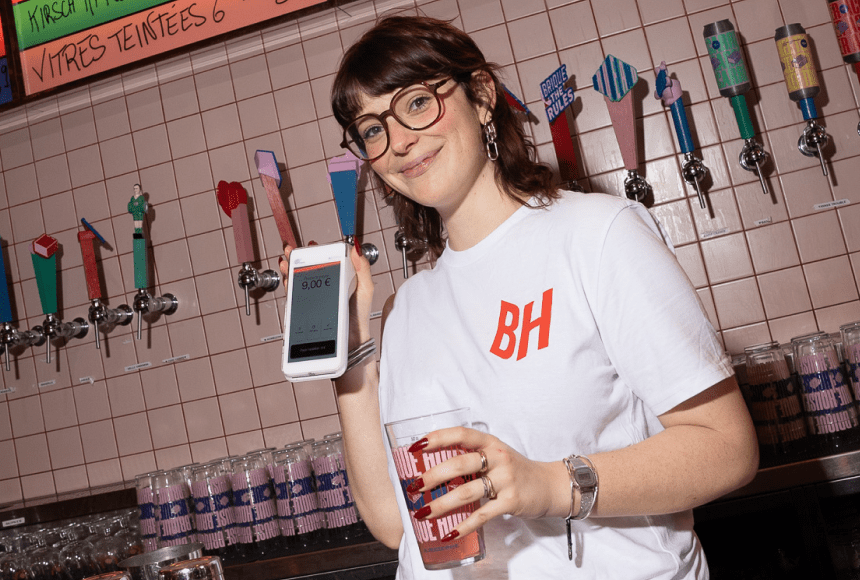
A Practical Guide to Selecting the Best Payment Terminal for Your Dining Establishment
Why Your Choice of Card Machine Matters
Running a restaurant is equal parts passion and pragmatism. You want every plate to shine, every wine to delight the senses, and every guest to leave with a smile. Yet none of that happens without a robust, efficient way to settle the bill. Choosing the right card machine—or payment terminal—may not sound as glamorous as selecting the perfect cut of steak, but it can have a huge impact on your daily operations, staff morale, and the overall dining experience you provide.
In the UK’s ever-competitive restaurant market, an outdated or clunky payment method can slow your entire front-of-house, leading to frustrated guests and fatigued servers. Moreover, payment preferences are changing quickly: according to UK Finance, contactless payments accounted for well over half of card transactions in 2022, and that figure continues to rise. If you want to keep pace with customer expectations—and ensure your restaurant thrives—you need a payment terminal that suits your venue’s specific needs.
Identifying Your Restaurant’s Core Payment Needs
Before diving into the technicalities, it’s crucial to understand the demands of your particular establishment. Every restaurant has its own workflow and clientele, and not every card machine is one-size-fits-all.
- High-Volume Service: Does your restaurant handle a large number of transactions in quick succession (e.g., fast-casual spots or coffee shops)? You’ll want a machine that processes payments swiftly.
- Tableside Service: Are your servers expected to bring the payment device to each table for a more personal touch? Then you need a portable card reader with reliable connectivity.
- Multi-Location Operations: Maybe you run a group of restaurants or a chain. In that case, you’ll need uniformity and easy scalability, so staff can transfer skills from one location to another.
- Add-On Services: Do you offer takeaway or delivery? If so, consider whether you need an all-in-one system that can handle both in-house and off-site payments seamlessly.
The clearer you are about these specific requirements, the easier it becomes to narrow down the features and functionalities that matter most. You’re effectively drawing up a blueprint for the payment solution that will fit your business like a glove.
Essential Features to Look For
Some features are non-negotiable in a modern restaurant environment, regardless of your concept or size. Let’s break them down so you know what to look for when shopping around.
- Contactless Capability: The vast majority of diners expect to simply tap their card or smartphone, especially for mid-range transactions. Ensuring your card machine supports contactless (including Apple Pay and Google Pay) is a must.
- Portable Design: Many restaurants benefit from a handheld device that can be brought directly to each table. This cuts down on traffic jams near a fixed till and speeds up the payment process.
- Fast Processing Speed: In a bustling environment, slow authorisation can create a frustrating backlog. Even a few extra seconds per table can pile up during peak hours.
- Integration with Your Point-of-Sale (POS) System: Ideally, your card machine syncs orders, itemised bills, and transaction data with the same POS software the servers use for taking orders. This minimises manual reconciliation and reduces errors.
- Security Compliance: Your payment terminal should meet the latest security standards (e.g., PCI DSS). Customers must trust that their data is in safe hands.
- Offline Capabilities: Internet outages can happen. Some card machines allow offline transactions, which are then processed when the connection is restored. This can be a lifesaver on a busy weekend night.
In essence, a high-quality card machine is a blend of convenience, speed, and security. Striking the right balance can elevate your entire service cycle, freeing up your staff to focus on delivering a memorable culinary experience rather than wrestling with tech glitches.
Staying in Tune with Customer Expectations
Diners don’t just come to your restaurant for the food; they come for the overall experience—from the moment they walk in until the second they step out. Payment is often the final interaction they have with you, so it’s wise to make it smooth and quick. Nothing kills the buzz of a fabulous meal like a 10-minute wait for the bill, or a failing card machine that requires multiple attempts to read a chip.
Meanwhile, more customers are embracing quick, digital payments. Some even prefer scanning a QR code at the table, rather than physically handling a card machine. By offering modern, frictionless options, you show that you respect their time and their comfort—two factors that contribute to lasting loyalty. And if you use a tool like sunday to let diners scan a QR code, pay, and even leave a Google review, it’s a win-win. You get faster table turnover, and guests leave with a final, hassle-free impression of your hospitality.
Balancing Cost with Value
Let’s be real: cost is a major concern for every restaurant owner. Whether you’re operating on thin margins or enjoying a comfortable profit, every expense needs justification. Card machine solutions typically involve a combination of upfront costs (for the hardware), transaction fees, and ongoing service fees. This can feel daunting if you’re not sure how to measure return on investment.
However, cheaper isn’t always better. A system with lower fees but poor integration might cost you more in the long run—lost time, staff frustration, and even negative customer experiences. On the flip side, an advanced card machine that syncs with your POS, offers contactless, and allows easy tipping might help boost revenue and staff satisfaction. Weigh each option carefully, and consider how added features can save you time or generate more sales.
- Look at the big picture: A small difference in transaction fees might be offset by faster table turnover and bigger tips, leading to net gains.
- Ask for detailed quotes: Some providers bundle customer support, warranties, or replacement devices in their pricing. Others charge extra for every add-on.
- Negotiate transaction rates: If you run a high-volume operation, you may have room to negotiate better processing rates due to your larger monthly transactions.
What About Connectivity?
A great card machine is worthless if it’s constantly dropping the signal. In the UK, especially in older buildings or busy city centres, wireless coverage can be patchy. A payment terminal that relies on a 4G or Wi-Fi connection can experience hiccups, leading to lost or incomplete transactions.
Ask prospective providers about the technology that powers their devices. Do they offer dual connectivity (Wi-Fi and 4G) so you have a fallback option? Is there a built-in SIM card that automatically switches to the strongest available network? This might seem like a small detail, but in a restaurant with thick walls or in an area with spotty coverage, it can be the difference between a fluid service and nightly headaches.
Ergonomics and Ease of Use
Remember, your team will be handling this equipment multiple times a day, every single day. If the card machine is too heavy, awkwardly shaped, or has an unintuitive interface, staff could become frustrated or prone to making errors. Training new hires also becomes more time-consuming.
Look for a device with a user-friendly touchscreen or keypad. Test how quickly it can pull up the bill or split checks. Check if it prints receipts instantly or if you need a separate printer. These small design details can add up to big improvements in efficiency. A well-designed card machine helps your team focus on the human element of hospitality, rather than fiddling with technology.
Prioritising Staff Involvement
When rolling out new payment tech, your servers are on the front lines. Their comfort level with the device will largely determine if it’s a success or a flop. Including them in the selection process can help ensure better adoption and day-to-day usage.
- Get Feedback: Let a few trusted staff members test different card machines and gather their thoughts. Which interface do they find easiest to navigate?
- Offer Training: Set aside time for training sessions to go over device features, best practices, and troubleshooting tips. This is also a great moment to explain how certain functionalities, like integrated tipping prompts, might boost their earnings.
- Address Concerns: Some team members may be wary of new technology. Clear up any doubts early, whether it’s about connectivity, ease of use, or how tips are processed.
When your front-of-house staff feel confident, that energy carries over to the guests, creating a more positive dining atmosphere.
Evaluating Post-Purchase Support
No matter how high-tech or reliable your card machine is, issues can arise. Whether it’s a printer jam or a connectivity glitch, you’ll want swift and efficient help—especially if it’s Saturday night and your place is full. Choose a provider with strong customer support, ideally available 24/7 or during your peak hours.
You can often glean insights by reading customer reviews or asking other restaurant owners about their experiences. Does the support team respond quickly to queries? Are replacement devices shipped overnight if something breaks? These are the day-to-day realities that can make or break your satisfaction with the payment solution. After all, every minute lost to tech problems is a minute not spent creating a memorable experience for your diners.
Integrating with Broader Operational Goals
A card machine doesn’t exist in isolation. It’s part of a larger ecosystem that includes your kitchen workflows, table management, and marketing. Some advanced payment terminals or accompanying software can gather data on transactions, average spend per table, and other valuable metrics. These insights can help you refine your menu, adjust staffing levels, or plan promotions.
If you’re working with a system like sunday, you also have the option to guide diners toward leaving a Google review right after payment. This immediate feedback loop can boost your online reputation and visibility without relying on guests to remember once they’re home. Integrating payment with marketing in a seamless way brings a host of benefits that go beyond a simple card swipe.
Adapting to Contactless and Mobile Payment Trends
Mobile wallets like Apple Pay and Google Pay are now commonplace. Some diners also prefer to pay through their own smartphones by scanning a QR code, which can reduce device handling entirely. If you want to keep up with these preferences, make sure your payment terminal supports all the major wallet providers and integrates with any QR-based solutions you plan to offer.
For restaurants that see a lot of group dinners, splitting the bill among multiple cards or digital wallets can be a frequent request. Simplifying that process with your card machine or a complementary payment app spares your servers the mental math and spares your diners any awkwardness over who owes what. The more friction points you remove, the more satisfied your customers will be—and satisfied customers tend to leave better tips and stronger reviews.
Forecasting Future Needs
The restaurant industry evolves rapidly. Today’s trends, such as contactless and QR payments, might morph into something new in a few years. Don’t just choose a card machine for your current situation; think about how your business might grow or change. Are you planning to expand with a new terrace or an outdoor dining area? Will you start hosting events or offering catering services? Make sure your payment solution is flexible enough to adapt.
Moreover, keep an eye on emerging technologies like biometric payments or loyalty programs integrated directly into the payment flow. While not mainstream yet, these could become important differentiators. Opting for a card machine or platform with a track record of software updates and new integrations ensures you can stay ahead of the curve without completely overhauling your hardware.
Bottom Line: A Smart Investment for Smooth Service
Choosing the right payment terminal might not be as enthralling as designing your seasonal menu, but it’s every bit as influential in shaping how guests perceive your restaurant. A sleek, reliable card machine keeps the atmosphere relaxed and your service efficient. It also frees your staff from technology mishaps, so they can focus on what truly matters—making every diner feel special.
If you’re uncertain, start by clarifying your specific needs—volume, type of service, connectivity constraints, and so on. Then look for a solution that offers the features you need today, plus the flexibility to grow with you tomorrow. Consulting your staff and reading honest reviews can help you make a confident decision. And if you want to go a step further, consider integrating a modern tableside payment platform, such as sunday, where customers can scan, pay, tip, and even post a review with minimal fuss.
When the payment side of the dining experience is smooth and straightforward, everyone wins. Diners appreciate the convenience and the time saved. Staff enjoy a less stressful workflow and potentially higher tips. You gain a more efficient operation—and the potential for stronger customer loyalty. That’s a recipe for success any restaurant owner can savour.
Further Reading and Resources
For additional insights on UK payment trends and card usage, you might find the UK Finance: Payment Markets report useful. It highlights evolving consumer habits and can guide your decision on which features are essential for your next card machine.
As you weigh your options, remember that optimising payment isn’t just about cutting-edge tech; it’s about providing a seamless end-to-end dining journey. When you get that final step right, you set the stage for warm memories, repeat visits, and a brand that resonates with modern diners.
Find out more today
Drop us your details below and we’ll reach out within the next 24
The payment terminal to make your operation simpler.
Connected to your POS, we offer the only payment terminal specifically designed for restaurants.


